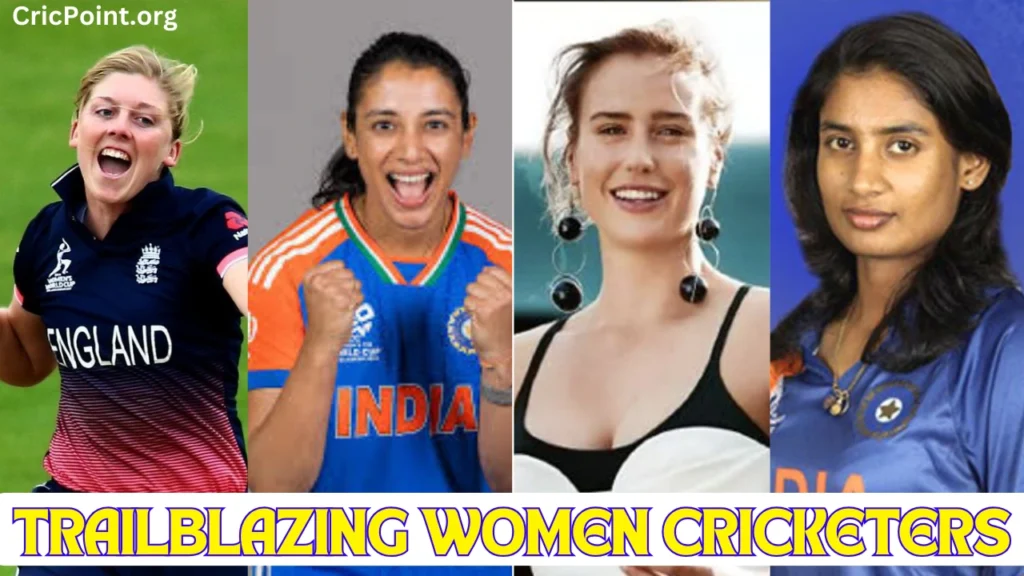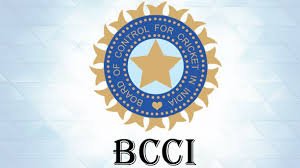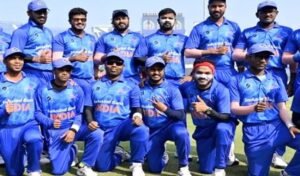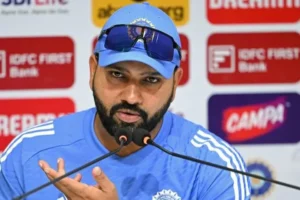In recent years, women’s cricket has gained substantial popularity, sparking inspiration and admiration among fans worldwide. Female cricketers are no longer merely participants but are transforming the sport, showcasing immense talent, resilience, and a unique flair that has caught global attention. Their success has not only paved the way for more young girls to take up the game but also emphasized the importance of gender equality in sports. This article delves into the lives of top women cricketers from around the world, exploring their journey, achievements, and the lasting impact they have on cricket.

Contents
- 1 The Rise of Women’s Cricket
- 2 1. Mithali Raj (India) – The Run Machine
- 3 2. Ellyse Perry (Australia) – The All-Round Sensation
- 4 3. Smriti Mandhana (India) – The Elegant Left-Hander
- 5 4. Suzie Bates (New Zealand) – A Veteran Leader
- 6 5. Meg Lanning (Australia) – The Captain Marvel
- 7 6. Shashikala Siriwardene (Sri Lanka) – The Pioneering All-Rounder
- 8 7. Heather Knight (England) – The Strategist
- 9 8. Stafanie Taylor (West Indies) – The Caribbean Powerhouse
- 10 9. Dane van Niekerk (South Africa) – The Versatile Leader
- 11 The Global Impact of Women Cricketers
- 12 Challenges and the Road Ahead
- 13 Conclusion
The Rise of Women’s Cricket
Women’s cricket has come a long way, with increased international viewership, sponsorship, and robust support systems. Governing bodies like the ICC (International Cricket Council) have introduced various initiatives to boost women’s participation and visibility in cricket. The growth of leagues, such as the Women’s Big Bash League (WBBL) in Australia and the Women’s Premier League (WPL) in India, has significantly contributed to the popularity and commercial viability of women’s cricket. In this evolving landscape, several cricketers have emerged as game-changers, bringing not only their skills but also their unique perspectives to the sport.
1. Mithali Raj (India) – The Run Machine
Mithali Raj’s career is synonymous with consistency and resilience. Known as the ‘Sachin Tendulkar of women’s cricket,’ Mithali has broken multiple records, including becoming the highest run-scorer in women’s One Day Internationals (ODIs). Her disciplined approach to the game has inspired millions, particularly in India, where cricket is seen as more than just a sport. Beyond her records, Mithali’s impact extends to popularizing women’s cricket in India, opening doors for future generations and inspiring an unprecedented level of interest in the women’s game.
2. Ellyse Perry (Australia) – The All-Round Sensation
Australia’s Ellyse Perry is celebrated for her dual-sport talent, having represented her country in both cricket and soccer. Perry’s prowess as an all-rounder—capable of both powerful batting and precise bowling—has made her one of the most well-rounded players in the world. Her commitment to fitness, athleticism, and skill makes her a global icon, while her role in Australia’s successive World Cup victories has set new standards for excellence in women’s cricket. Perry’s dedication to the sport has also inspired younger players worldwide to focus on fitness and versatility.
3. Smriti Mandhana (India) – The Elegant Left-Hander
With her stylish strokes and calm demeanor, Smriti Mandhana has taken the world by storm. Her aggressive yet graceful batting style has earned her numerous accolades, including the ICC Women’s Cricketer of the Year. As a left-handed opener, Smriti’s ability to build innings and her eye-catching shots have made her one of the most-watched players in the world. Her rise has significantly contributed to the popularity of women’s cricket in India, especially among younger fans who see her as a role model for modern cricketing aspirations.
Related Article: Neeraj Chopra: A Comprehensive Biography of India’s Golden Boy in Athletics 2024
4. Suzie Bates (New Zealand) – A Veteran Leader
Suzie Bates has been a cornerstone of New Zealand’s women’s cricket for over a decade. Known for her powerful batting and sharp cricketing mind, Bates has captained her national team and brought stability and strategy to the squad. With numerous records under her belt, she remains an influential figure in global cricket. Bates’ leadership skills have inspired many young female cricketers to see themselves not just as players but as potential leaders, showcasing how effective a well-rounded, tactical approach to cricket can be.
5. Meg Lanning (Australia) – The Captain Marvel
Meg Lanning, one of Australia’s most successful captains, has led her team to multiple World Cup victories, setting records along the way. Known for her calculated captaincy and batting prowess, Lanning’s approach to the game is both strategic and precise. Her achievements as a captain have underscored the importance of leadership and teamwork, inspiring women worldwide to aim high in competitive sports. Lanning’s vision for women’s cricket goes beyond wins; she advocates for more opportunities, visibility, and equality for women in sports.
6. Shashikala Siriwardene (Sri Lanka) – The Pioneering All-Rounder
Shashikala Siriwardene has been a stalwart for Sri Lankan women’s cricket. As an all-rounder, Siriwardene’s ability to adapt to different formats of the game and contribute with both bat and ball has made her an invaluable player. Despite the challenges women’s cricket faces in Sri Lanka, her determination and hard work have made her a role model. Her career has inspired a generation of Sri Lankan girls to take up the sport and aim to play at the highest levels, regardless of limitations.
7. Heather Knight (England) – The Strategist
England’s Heather Knight is renowned for her strategic thinking and ability to lead under pressure. As the captain of England, Knight led her team to victory in the 2017 ICC Women’s World Cup, a monumental achievement that showcased her tactical approach and resilience. Her leadership on the field has been instrumental in bringing women’s cricket to the forefront in England. Beyond her personal achievements, Knight is an advocate for expanding women’s cricket globally, with a special focus on increasing its presence in non-traditional cricketing nations.
8. Stafanie Taylor (West Indies) – The Caribbean Powerhouse
Stafanie Taylor has single-handedly transformed women’s cricket in the West Indies with her incredible talent and perseverance. As a top-ranked batter and an efficient bowler, Taylor’s all-round capabilities have made her a standout player in the international arena. She has led the West Indies to multiple victories, including the T20 World Cup win in 2016. Her success has ignited interest in women’s cricket across the Caribbean, empowering young athletes and promoting the sport in a region traditionally dominated by men’s cricket.
Related Article: Everything You Need to Know About Kabaddi: Rules, Top Teams, and Star Players
9. Dane van Niekerk (South Africa) – The Versatile Leader
Dane van Niekerk’s career as an all-rounder and captain of South Africa’s women’s cricket team has been inspirational. Known for her spin bowling and aggressive batting, she has consistently performed at high levels across formats. Van Niekerk has worked tirelessly to uplift women’s cricket in South Africa, inspiring young cricketers, particularly in a region where women’s sports still face challenges. Her influence extends to advocating for equal pay and resources, setting a powerful example for future athletes.
The Global Impact of Women Cricketers
The rise of these exceptional players has transformed women’s cricket into a powerful platform for gender equality. Many of them have used their positions to champion causes such as equal pay, better facilities, and increased visibility for women’s sports. The presence of women’s leagues, more accessible cricket academies, and increased funding have all contributed to this positive shift. Additionally, these players’ achievements have garnered media attention, compelling fans and aspiring cricketers to take women’s cricket seriously.
Challenges and the Road Ahead
Despite these strides, women’s cricket still faces challenges, including disparities in pay and access to resources. However, the efforts of these players, alongside support from fans, sponsors, and governing bodies, have started to bridge these gaps. Moving forward, more representation, media coverage, and financial backing will be essential in securing a brighter future for women’s cricket.
Conclusion
The legacy of these top women cricketers extends far beyond the boundaries of a cricket field. They have redefined what it means to be an athlete, not just by breaking records but by inspiring change and challenging traditional views. These trailblazers have shown that women’s cricket is not just a sport—it’s a movement. Their contributions have created a lasting impact on the game and are paving the way for future generations of female cricketers who will continue to redefine excellence in cricket.
In the words of these remarkable players, women’s cricket is no longer a sideshow; it’s the main event, and they are here to stay.






